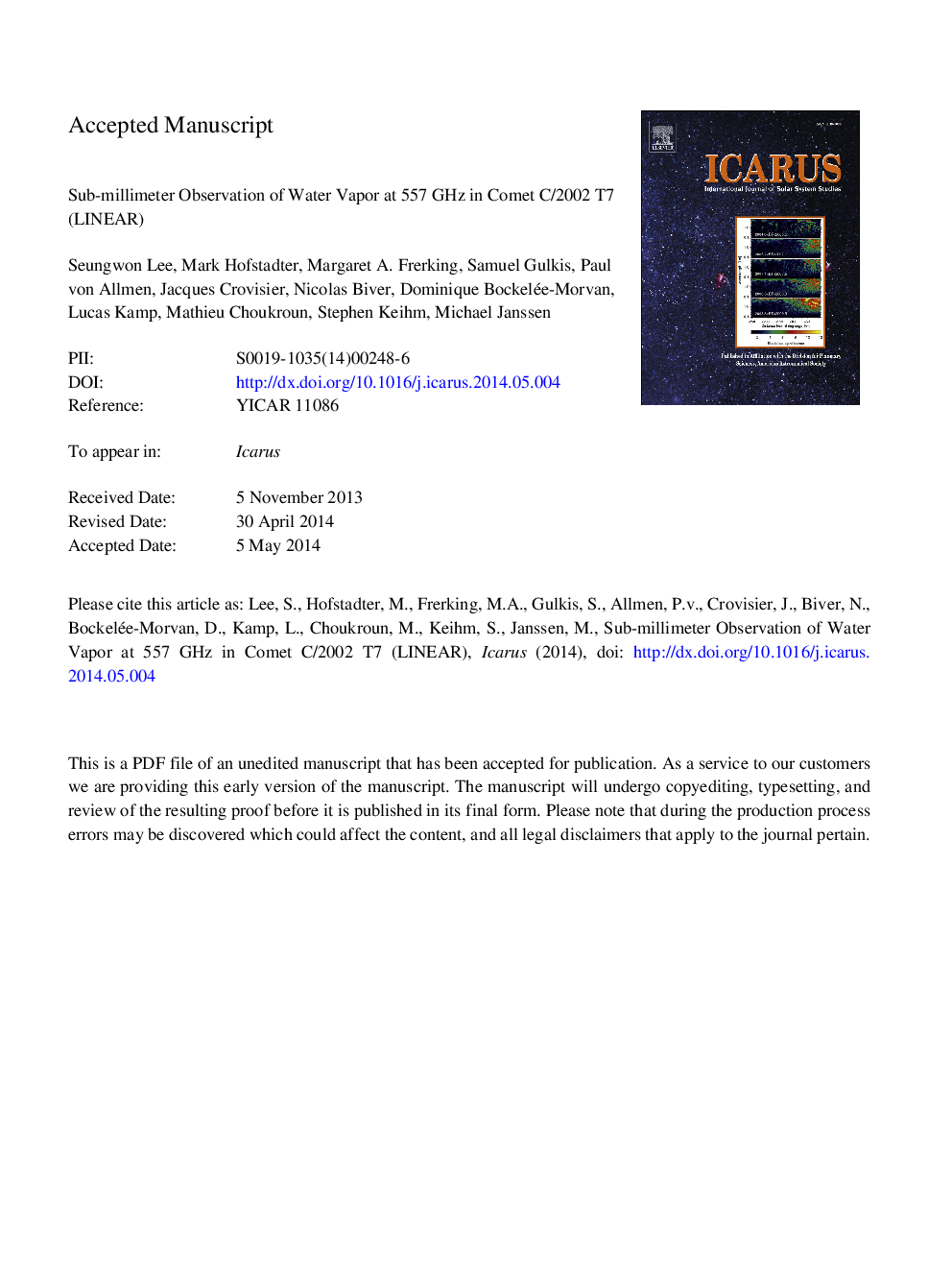| Article ID | Journal | Published Year | Pages | File Type |
|---|---|---|---|---|
| 8137934 | Icarus | 2014 | 35 Pages |
Abstract
We present sub-millimeter observations of the ground-state rotational transition (110-101) of water vapor from Comet C/2002 T7 (LINEAR) obtained with the MIRO instrument on the ESA Rosetta spacecraft (s/c) orbiter on April 30, 2004. At the time of the observations, the comet was at a distance of 0.63 AU from the Sun, 0.68 AU from the MIRO telescope, and about 7.5 days after its perihelion. The ground state rotation transition of ortho-water at 556.936 GHz was observed and integrated for â¼8 h using a frequency switched radiometer to provide short and long term stability. The MIRO beam size is 7.5 arcmin in terms of full width half maximum, corresponding to a radius of 1.1 Ã 105 km at the comet location. The observed signal line area of the water line spectrum is 4.3 ± 0.8 K km/s. Using a molecular excitation and radiation transfer model and assuming the spherically symmetric and constant radial expansion of gas in the coma, we estimate that the production rate of water is (1.0 ± 0.2) Ã 1030 molecules/s and the expansion velocity is 1.1 ± 0.2 km/s at the time of the MIRO observation. The present estimation of the water outgassing rate of the comet is in good agreement with other observation-based estimations when the outgassing rates with respect to the time after perihelion are compared. The Doppler-corrected center velocity of the observed line was red-shifted by 0.67 ± 0.13 km/s, of which only 0.18 km/s shift is explained by the model and attributed to a self-absorption effect. The potential sources of the additional red shift are discussed.
Related Topics
Physical Sciences and Engineering
Earth and Planetary Sciences
Space and Planetary Science
Authors
Seungwon Lee, Mark Hofstadter, Margaret A. Frerking, Samuel Gulkis, Paul von Allmen, Jacques Crovisier, Nicolas Biver, Dominique Bockelée-Morvan, Lucas Kamp, Mathieu Choukroun, Stephen Keihm, Michael Janssen,
